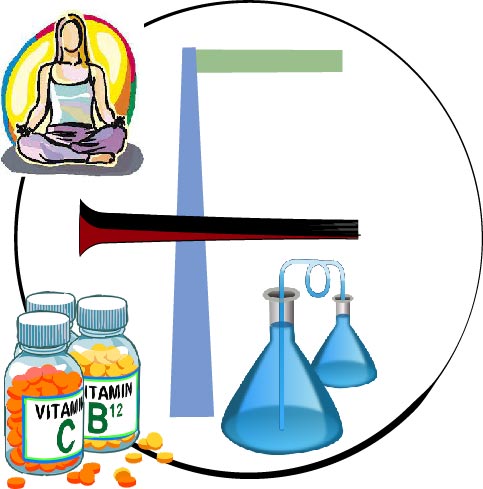
Potentiometric Titration
karl fischer titration || HPLC || GC || GMP || Method validation || QMS
What is Potentiometric Titration?
Potentiometric titration is a technique similar to direct titration, but in this, no indicator reagent is used; instead, an electrode is used as an indicator. In potentiometric titrations, a cell is used with a reference electrode, salt bridge, analyte and an indicator electrode. Generally, the electrolyte solution is used as an analyte. Hydrogen electrodes, silver chloride electrodes and calomel electrodes are generally used as reference electrodes. Indicator electrode is generally glass electrode and metal ion electrode.
Potentiometric Titration principle of Potentiometry Principle
When the pair of electrodes are placed in the sample solution or analyte, it shows the potential difference between two electrodes by the addition of the titrant or by the change in the concentration of ions.
The two electrodes are named reference electrodes and indicator electrodes. The reference electrode is the electrode that maintains its potential and remains stable when dipped into a sample solution. An indicator electrode is an electrode that responds to variation in the potential of analyte solution. A salt bridge is used to prevent interference of the analyte with the reference electrode.
The electromotive force or overall potential difference can be calculated by using the following formula –
Ecell = Eind – Eref + Ej
Where
Ecell = electromotive force of the complete cell
Eind = electromotive force of the indicator electrode
Eref = electromotive force of the reference electrode
Ej = electromotive force at the junction across the salt bridge
(Image will be uploaded soon)
The electric potential of the cell is dependent on the concentration of ions in contact with the indicator electrode, as shown in the above graph. As a result, the Ecell is measured after each titrant addition.
Potentiometric Titration Procedure
Potentiometric titration involves the measurement of the potential of an indicator electrode with respect to a reference electrode as a function of titrant volume. In this titration, we measure and record the cell potential (in millivolts or pH) after adding titrant each time. As we approach the endpoint, we start adding titrants in very small quantities. The most straightforward and most used method of endpoint detection in potentiometric titration is plotting a graph between cell potential and volume of titrant. The midpoint of the steeply rising portion of the graph or curve is estimated visually and taken as an endpoint. As it is shown below in a sample graph –
Types of Potentiometric Titration
Following four types of titrations can be performed by potentiometric titration –
Acid-base titration
Titration of HCl with NaOH can be done by potentiometric titration. This concentration of a given acid/base is determined by using a standard solution.
Redox Titration
Potentiometric titration was first used for redox titration by Crotogino. He titrated halide ions with KMnO4 using a platinum electrode and calomel electrode.
Complexometric titration
In this type of potentiometric titration concentration of metal ions are determined in the analyte. In this membrane, electrodes are used.
Precipitation Titration
In this type of titration, the precipitate is formed, as the name suggests. When the addition of the titrant no longer forms a precipitate, that point is noted as the endpoint.
Applications of potentiometric titrations
-
It is used in clinical chemistry for the analysis of metals.
-
It is used for the analysis of cyanide, ammonia etc., in water or wastewater.
-
It is used in agriculture for the detection of different elements in soils, fertilizers etc.
-
It is used in detergent manufacturing, food processing etc.
Let us look at the application of potentiometric titrations across various industries in detail.
Clinical chemistry
They are useful sensors because analytes in complexmatrices are selective for ion-selective electrodes in clinical chemistry. Analytes including sodium, potassium, calcium, hydrogen, and chlorine, as well as dissolved gases like CO₂, are commonly used.
Environmental chemistry
Environmental chemistry is used to quantify CN–, NO3, F3, and NH3 in water and wastewater.
Potentiometric titrations
To calculate the equivalence point, a potentiometric acid-base titration is used. Chemical reactions such as precipitation, acids, bases, redox processes, complexations, and also including the other chemical reactions may be titrated in both aqueous and non-aqueous solvents.
Agriculture
NO3, NH4, I, Ca, K, and CN are all elements found in soils, plant materials, feed, and fertilisers.
Detergent production
Studying the effects of calcium, barium, and fluorine in detergent manufacturing.
Potentiometry titration also available in app
- in this app we discuss of potentiometry titration
- give life example like husband and wife relationship they how to live with each other.
- what is relation of this cuple his neighborhood
Potentiometric Titration
Download app store

Pharma Interview
Download app store
Potentiometric titration Blog
Before use karl fischer titration care
by maheshbhuva | Jul 5, 2025 | Analytical Chemistry, karl Fischer titration, Molarity, Normality, Pharmaceutical interview,, Potentiometric Titration, Quality control (QC), wet lab
"Care before use" in Karl Fischer titration refers to the crucial steps and considerations taken before starting the actual titration process to ensure accurate, reliable, and safe results. Given that Karl Fischer titration is highly sensitive to moisture, these...
Potentometry titration
by maheshbhuva | Jan 13, 2023 | Analytical Chemistry, Pharmaceutical interview,, Potentiometric Titration
Potentiometric titration
Pharma Blog
Specificity analytical method validation creative way to understand
by maheshbhuva | Oct 10, 2025 | Analytical Chemistry, Analytical method development hplc,, Method validation, Quality control (QC), wet lab
Specificity analytical method validation creative way to understand Imagine analytical method validation as building a highly specialized "detection machine" for a specific target. Specificity is about ensuring your machine only detects your intended target and...
Iodimotry titration story way to understand
by maheshbhuva | Jul 26, 2025 | Analytical Chemistry, Quality control (QC), Titration, wet lab
Imagine you're a detective, and your mission is to find out exactly how much of a sneaky, hidden chemical called an "oxidizing agent" is present in a mysterious solution. You can't see it, you can't smell it, but you know it's there, lurking.Your secret weapon in this...
Complexometry titration
by maheshbhuva | Jul 22, 2025 | Analytical Chemistry, Quality control (QC), Titration
Complexometric titration, also known as chelatometry, is a type of volumetric analysis that relies on the formation of a colored complex to indicate the endpoint of a titration. This method is particularly useful for determining the concentration of metal ions in a...
Before use karl fischer titration care
by maheshbhuva | Jul 5, 2025 | Analytical Chemistry, karl Fischer titration, Molarity, Normality, Pharmaceutical interview,, Potentiometric Titration, Quality control (QC), wet lab
"Care before use" in Karl Fischer titration refers to the crucial steps and considerations taken before starting the actual titration process to ensure accurate, reliable, and safe results. Given that Karl Fischer titration is highly sensitive to moisture, these...
Analytical method validation other concepts
by maheshbhuva | May 21, 2025 | Analytical Chemistry, ICH Guideline, QMS, Quality control (QC)
Understood. "Analytical image method validation" refers to the process of ensuring that image-based methods used for quantitative or qualitative analysis consistently produce reliable, accurate, and fit-for-purpose results. This is crucial in fields like...
Uv analysis sop in pharma
by maheshbhuva | May 20, 2025 | Analytical Chemistry, Quality control (QC), Uv
This sounds like you're looking for a Standard Operating Procedure (SOP) for Ultraviolet (UV) analysis. Here's a general outline of what a comprehensive SOP for UV analysis would typically include. Keep in mind that the specific details will vary depending on the...
Specificity analytical method validation
by maheshbhuva | May 17, 2025 | Analytical Chemistry, Analytical method development hplc,, Method validation, QMS, Quality control (QC), Wheat
According to the International Council for Harmonisation of Technical Requirements for Pharmaceuticals for Human Use (ICH) guideline Q2(R1), specificity is defined as:"Specificity is the ability to assess unequivocally the analyte in the presence of components which...
Uv development
by maheshbhuva | May 13, 2025 | Analytical Chemistry, Analytical method development hplc,, Method validation, Quality control (QC), Research and development (R&D)
UV development can refer to several distinct areas, primarily revolving around ultraviolet (UV) light and its applications. To provide a comprehensive answer, let's explore these different facets:1. UV Spectroscopy Method DevelopmentThis involves creating and...
Uv analysis in pharma
by maheshbhuva | May 12, 2025 | Analytical Chemistry, Quality control (QC), Uv
"UV analysis" most likely refers to Ultraviolet-Visible (UV-Vis) Spectroscopy. This is a widely used analytical technique that studies how substances interact with ultraviolet and visible light.Here's a breakdown of what UV-Vis analysis entails:Principle: * UV-Vis...
HPLC Blog
HPLC PUMP TROUBLESHOOTING
HPLC (High-Performance Liquid Chromatography) pump issues can significantly impact the performance and reliability of your chromatographic analysis. Here are some common problems and potential solutions: Common Issues: Flow rate inconsistencies: Variations in flow...
HPLC calibration compound might be use
B - naphtholCaffeineToluene Whu this use • Not harm your column • Easy mixtures like methanol water mix use the mobile phase • So not harm your column • Peak are very identical Not use any buffer so not harm in column
HPLC calibration which substance use why ?
B - naphtholCaffeineToluene Whu this use • Not harm your column • Easy mixtures like methanol water mix use the mobile phase • So not harm your column • Peak are very identical Not use any buffer so no harm in column
Chromatography 621 number chapter adjustment parameters is 8
1) Ph
2) injection volume
3) Temperature
4) buffer Concen
5) Column
6) Mobile phase ratio
7) Wave leny
8)Flow rate
FACTOR AFFECTS ON HPLC COLUMN
1) Partial Blockage of column 2) Adsorption of sample impurities inside column surface. 3) Poorly packed stationary phase. 4) Mechanical or thermal shocks during Handling. 5) Chemical attack on the stationary phase.
HPLC Interview Top 15 Question and answer
1. What is HPLC? Answer:HPLC stands for High-Performance Liquid Chromatography. It is a technique used for separating, identifying, and quantifying components in a mixture. It uses a liquid mobile phase under high pressure to pass through a column containing a...
